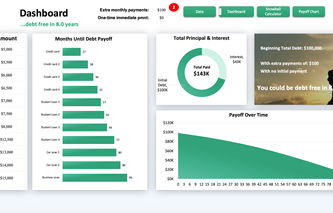Capital One SavorOne vs. Quicksilver: The choice seems to be simple. SavorOne offers up to 3% cash back, and Quicksilver only 1.5%. Both are free to use and offer sign-up bonuses. But which one will actually be better for you?
Read on to decide for yourself—
Which one is better: Capital One SavorOne or Quicksilver.
Their fees, rewards, and benefits.
How other Capital One cards stack up.
Read more:
Capital One Quicksilver vs. Capital One SavorOne
Let’s start with the basics:
CAPITAL ONE QUICKSILVER CASH REWARDS | CAPITAL ONE SAVORONE CASH REWARDS | |
|---|---|---|
Best for | Unlimited cash back of 1.5% on every purchase | Cash back of 3% on food and entertainment |
Required credit score | Good–excellent (690–850) | Good–excellent (690–850) |
Intro offer | $200 Earn $200 after spending $1,000 within the first 3 months of using the card | $200 Earn $200 after spending $1,000 within the first 3 months of using the card |
Rewards | 5% for car rentals and hotels booked through Capital One Travel 1.5% on every purchase | 10% on Uber and Uber Eats purchases 8% on Capital One entertainment purchases 5% on hotel and rental car reservations made through Capital One Travel 3% cash back on dining, entertainment, popular streaming services & at grocery stores 1% on all other purchases |
Annual fee | $0 | $0 |
APR | 19.74%–29.74% (Variable) | 19.74%–29.74% (Variable) |
Capital One Quicksilver Rewards card
Capital One Quicksilver Cash Rewards card is your go-to choice for easy cash back on everything you buy.
It’s perfect if you’re all about simplicity and effortless rewards without diving into complex points systems or categories.
- Unlimited cash back.
- 0% intro APR.
- Sign-up bonus.
- No annual fee.
- No foreign transaction fee.
- Automatic credit line reviews.
- Additional benefits.
- High APR after the intro period.
- Excellent credit score is required.
- No extra cash back categories.
- No points transfer capabilities.
Capital One SavorOne Rewards card
Capital One SavorOne Cash Rewards card is your trusty sidekick for earning cash back on food, fun, and more.
Designed for foodies and entertainment lovers, it’s a top pick when you want to rack up rewards specific to your dining and leisure experiences.
- No annual fee.
- Generous cash back.
- Earn more on specific categories.
- $200 introductory bonus.
- Extra Capital One benefits.
- No foreign transaction fee.
- High APR.
- Some stores are excluded from top-tier cash back.
- Good or even excellent score required.
SavorOne vs. Quicksilver: How Do They Compare?
Now we’ll dive into the details of these cards, starting with how much you’ll have to fork out in fees:
Quicksilver vs. SavorOne: fees & rates
QUICKSILVER | SAVORONE | |
|---|---|---|
Annual fee | $0 | $0 |
APR | 0% for the first 15 months, 19.74%–29.74% variable APR after the intro period | 0% for the first 15 months, 19.74%–29.74% variable APR after that |
Balance transfer fee | 3% | 3% |
Cash advance fee | $3 or 3% of the amount of each cash advance (whichever is greater) | $3 or 3% of the amount of each cash advance (whichever is greater) |
Foreign transaction fee | None | None |
Late fee | Up to $40 | Up to $40 |
Returned payment fee | None | None |
Over limit fee | None | None |
You can tell both SavorOne and Quicksilver belong to the Capital One family just by looking at the fees, right?
Now on to the rewards—
SavorOne vs. Quicksilver: rewards
QUICKSILVER REWARDS | SAVORONE REWARDS | |
Rewards rate | 5% cash back on rental cars and hotels booked through Capital One Travel 1.5% cash back on every purchase | 10% on Uber and Uber Eats purchases 8% on Capital One Entertainment purchases 5% on hotel and rental car reservations made through Capital One Travel 3% cash back on dining, entertainment, popular streaming services & at grocery stores 1% on all other purchases |
Redemption | Redeem for:
Use with:
Minimum to redeem:
| Redeem for:
Use with:
Minimum to redeem:
|
Expiration |
|
|
Cap | Unlimited | Unlimited |
At a glance, both SavorOne and Quicksilver have cash back rewards with no expiration or cap, but they’re different in what they reward.
Quicksilver keeps things simple with 1.5% cash back on every purchase. Great for those who don’t want to juggle spending categories—it’s got your back for all kinds of expenses.
So, if the mere thought of tracking and remembering when to pay for what using your credit card gives you a headache, Quicksilver will be your best friend.
SavorOne’s a treat for foodies and entertainment fans. With higher cash back rates (3% on dining, entertainment, streaming services, and groceries, or 5% on Uber and 8% on Capital One Entertainment) it’s the go-to card for folks with specific spending habits.
Remember
Superstores like Target and Walmart (and chosen streaming services like Amazon Prime) are excluded from earning upper-tier rewards on your SavorOne. You’ll earn only 1% buying groceries at gas stations, convenience stores, warehouse clubs, discount stores, and super stores (or at grocery stores associated with discount stores or super stores).
SavorOne card vs. Quicksilver card: benefits
You’d think Capital One can offer the same benefits for its cash back cards, but they also differ a bit.
Take a look:
CATEGORIES | QUICKSILVER BENEFITS | SAVORONE BENEFITS |
|---|---|---|
Travel | Travel accident insurance if you buy the fare with a Quicksilver Rewards card and Capital One Quicksilver rental car insurance | Travel accident insurance if you buy the fare with a SavorOne Rewards card |
Access to the Capital One Travel | Access to and cash back on Capital One Travel | |
An emergency replacement card and a cash advance if the card is lost or stolen during travel | ||
Uber One membership for 6 months | Cash back on Uber | |
Dining |
|
|
Protection |
|
|
Other |
|
|
If you’re keen on travel, the Quicksilver card seems to be a better option with its rental car insurance, an emergency replacement card, and a cash advance if your card is lost or stolen when traveling.
Quicksilver vs. SavorOne: approval odds
The word on the street is both of these cards are pretty hard to get.
You’ll need at least a good credit score and a certain income (online reviewers of the card say they have around $100,000) to be approved for either of them.
To give you a better idea, let’s see some details about people who got approved for SavorOne:
“Score: 735, oldest age: 14 years, average age: 5 years, credit line: (I’m assuming total credit at the time) $20k.”
“I got approved for the card after having a credit history of about thirteen months. Although it’s my lowest limit card since all of my other cards are around $2,000–$6,000.”
Remember
Capital One wants you to have a loan or credit card for three years or more, with a credit limit above $5,000. But again, some reviewers who have the cards say they didn’t meet that criteria. A lot of them claim it’s best to have at least thirteen months of credit history to apply for either of the cards.
Seeing that SavorOne can make you a bit more money, the approval odds might be slightly smaller.
But, as always, it depends on your financial situation and habits.
Capital One SavorOne vs. Quicksilver: credit limit
Exact credit limits for both Capital One SavorOne and Quicksilver cards are based on your creditworthiness, income, and credit history.
Capital One Quicksilver: Credit limits typically start as low as $1,000 (with some cardholders getting a limit of $10,000—or even $13,000—depending on their financial prowess).
Capital One SavorOne: Credit limits for SavorOne may be in a similar range, but cardholders online say they received a higher limit after upgrading from Quicksilver to SavorOne.
Of course, all of this always depends on your credit score, income, and so on—so don’t rely on specific numbers when applying.
Can I Have Two Capital One Cards?
Maybe you’re now wondering: Can I have both?
Well, if you just can’t decide between the two cards, you can consider getting both.
Having both SavorOne and Quicksilver cards can be a great way to maximize your rewards.
Remember
By using the SavorOne card for dining, entertainment, groceries, and streaming subscriptions—and the Quicksilver card for all other purchases—you can make the most of each card’s benefits.
Since both cards have a $0 annual fee, you can earn rewards without extra costs as long as you spend within your means.
It can even help you boost your credit score.
Multiple cards also open up the opportunity to take advantage of varied sign-up bonuses and rewards schemes. And from a credit score standpoint, spreading the expenses over different cards could potentially lower the credit utilization ratio and enhance the score. That being said, it’s not a guaranteed score booster—it all depends on how well the credit is managed.Alastair Hazell, The Calculator Site
SavorOne vs. Quicksilver—and How Do They Compare to Other Capital One Cards
Capital One gives you a lot of options—from an easy-to-get Platinum Secured to the only-for-excellent-credit Venture X card.
We’ll briefly compare them to give you an idea of the differences between them:
Capital One SavorOne vs. Venture vs. Quicksilver
QUICKSILVER | SAVORONE | VENTURE | |
|---|---|---|---|
Annual fee | $0 | $0 | $95 |
Rewards | 5% cash back on rental cars and hotels booked through Capital One Travel 1.5% cash back on every purchase | 10% on Uber and Uber Eats purchases 8% on entertainment purchases 5% on hotel and rental car reservations made through Capital One Travel 3% cash back on dining, entertainment, popular streaming services & at grocery stores 1% on all other purchases | 5 miles per $1 on rental cars and hotels booked through Capital One Travel 2 miles per $1 on every purchase |
Intro offer | $200 | $200 | 75,000 bonus miles* |
*That’s up to $750 if you use your miles to pay for travel stuff.
Read more:
VentureOne vs. SavorOne vs. Quicksilver
QUICKSILVER | SAVORONE | VENTUREONE | |
|---|---|---|---|
Annual fee | $0 | $0 | $0 |
Intro offer | $200 | $200 | 20,000 bonus miles* |
Rewards | 5% cash back on rental cars and hotels booked through Capital One Travel 1.5% cash back on every purchase | 10% on Uber and Uber Eats purchases 8% on entertainment purchases 5% on hotel and rental car reservations made through Capital One Travel 3% cash back on dining, entertainment, popular streaming services & at grocery stores 1% on all other purchases | 5 miles per $1 on rental cars and hotels booked through Capital One Travel 1.25 miles per $1 on every purchase |
*It’s worth $200 if you use it to pay for travel-related purchases.
If you want to see more alternatives, we prepared a couple of good ones that aren’t from the Capital One family—
Capital One SavorOne, Quicksilver & Their Alternatives
Chase Freedom Unlimited
A flat-rate cash back card with an extra cash back boost on travel, dining, and drugstore purchases.
Cash back: 5% on travel, 3% on dining and drugstores, 1.5% on everything else.
Sign-up bonus: Earn an extra 1.5% on everything you buy (on up to $20,000 spent in the first year)—worth up to $300 cash back. That’s 6.5% on travel purchased through Chase Ultimate Rewards®, 4.5% on dining and drugstores, and 3% on all other purchases.
Annual fee: $0
Foreign transaction fee: 3%
Blue Cash Everyday Card from American Express
Blue Cash Everyday Card from American Express is ideal for groceries and gas, with cash back at supermarkets, gas stations, and selected department stores.
Cash back: 3% at US supermarkets, 2% at US gas stations and select US department stores, and 1% on other purchases.
Sign-up bonus: Earn a $200 statement credit after you spend $2,000 in purchases on your new card within the first six months.
Annual fee: $0
Foreign transaction fee: 2.7% of each transaction after conversion to US dollars.
Read more:
Capital One Quicksilver vs. SavorOne: Which Card Should You Choose?
If you definitely don’t want to get both, ask yourself a few questions:
What do you spend most on? Quicksilver gives flat cash back on everything, while SavorOne rewards dining, entertainment, and groceries.
Simplicity or category-based? Quicksilver’s easygoing with the same rewards rate, but SavorOne offers higher rewards in certain categories.
Big on eating out and entertainment? SavorOne’s a foodie’s friend, with higher cash back for dining and entertainment.
Do you frequently shop at big box stores and watch Prime Video? If so, know that the Capital One SavorOne Cash Rewards credit card excludes these from its high-rewards cash back structure.
Once you make a decision, just click here and apply for SavorOne or click here to apply for Quicksilver.

.jpg)




